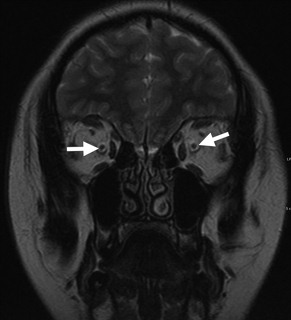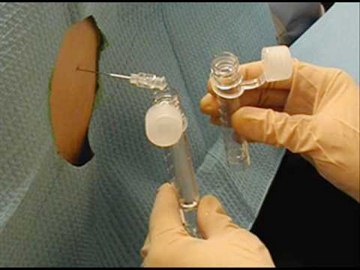Pseudotumor Cerebri – Symptoms, Causes, Treatment and Diagnosis
What is Pseudotumor Cerebri?
Pseudotumor cerebri or PTC is a disorder in the neurologic system involving an increase in the intracranial pressure without any cause such as diseases and tumor.
Intracranial pressure (ICP) is the pressure maintained inside the cranium around the brain. Pseudotumor cerebri is also called benign intracranial hypertension (BIH) or Idiopathic intracranial Hypertension (IIH).
PTC can occur in all age groups and is common in women. The incidence of PTC is about one in every 100,000 population. The disorder occurs in women 20 to 45 years of age. Women have a very high risk of developing the condition and are up to eight times more prone for PTC than men.
Specifically, women who are obese or overweight are predisposed to pseudotumor cerebri. In children, the occurrence of PTC is equal in males and females.
Symptoms of Pseudotumor Cerebri
The symptoms of pseudomotor cerebri are rooted with increased intracranial pressure. These include:
- Headache – Headache is the most common symptom of the condition and it appears to more than 90% of cases. Headache is characterized as throbbing, generalized and worsens in the morning. It can also be aggravated by Valsalva maneuver, coughing, straining on stools and sneezing. The pain may radiate to the shoulders and neck.
- Nausea and Vomiting (projectile) – The increased pressure compresses the brain because the cranium is a closed system. When the brain is compressed, the medulla oblongata (vomiting center) is affected.
- Pulsatile Tinnitus – Tinnitus is the presence of ringing of the ears and is seen in up to 87% of patients. The tinnitus is synchronous with the pulse

Tinnitus as one of the symptoms of Pseudotumor Cerebri
Image source: tinnitusdx.com
- Loss of senses – The senses may also be affected specifically the sense of smell because of possible swelling, traction and compression of the cranial nerves.
- Lack of coordination and balance – The increased ICP also compresses the cerebellum, which is responsible for balance and coordination.
- Double vision – People with abducens nerve palsy, damage to the sixth cranial nerve, may result to double vision because of the compression of the cranial nerves that pulls the eye outward.
- Facial muscle weakness – The facial nerve may also be affected causing problems on facial expression and movements.
- Papilledema – The increased ICP spreads the pressure on the optic nerve located on the eyes causing the optic disc to swell. Papilledema causes blind spots or visual obscurations. Papilledema is diagnosed using opthalmoscopy.

Papilledema due to increased intracranial pressure
Image source: webeye.ophth.uiowa.edu
Causes of Pseudotumor Cerebri
The cause of pseudomotor cerebri is unknown, which made it as idiopathic. Pseudotumor cerebri is diagnosed when other conditions or causative factors are not present to increase the intracranial pressure. Increased intracranial pressure, which is caused by certain factors are termed as secondary intracranial hypertension.
The cause of pesudotumor cerebri may be linked with the Monro-Kellie rule that any increase in the brain tissue, CSF and blood may lead to increased intracranial pressure. However, the exact root cause is not known.
Obesity and being overweight were linked to the occurrence of the condition because of increase in venous pressure.
Diagnosis of Pseudotumor Cerebri
Diagnosis of pseudotumor cerebri is made when other conditions are not present to increase ICP. The specific diagnostic tests used are:
Brain Scan
A brain scan with the use of MRI or CT scan is used to rule out other causes of the disorder. MRI findings and CT scan results may show normal scans because of the absence of any tumor and obstruction. However, patients may exhibit pituitary gland flattening or empty sella sign as a result of increased pressure inside the cranium.

Brain scan images to show flattening of pituitary gland
MR Venogram
This utilizes magnetic resonance imaging while contrast medium is injected on the veins in the brain. This test is used to determine any occurrence of cerebral venous sinus thrombosis or venous obstructions. This test is done for patients with atypical conditions to further evaluate the occurrence of any probable cause.
Lumbar Puncture
Lumbar puncture is done to measure the pressure in the CNS. The CSF may also be examined for presence of tumor or infection in the CNS, which may result to increased ICP. Proponents suggest that lumbar puncture should be taken while the patient is on a side lying position because sitting position may cause false positive increase in opening pressure.
The criteria for the diagnosis of poseudotumor cerebri use the Dandy criteria for the disease. These include:
- Presence of symptoms of elevated ICP
- No localizing signs, but may present abducens nerve palsy
- Normal brain scan findings
- Patient is alert and awake
- Opening pressure of greater than 25 cmH20 upon lumbar puncture with absence of abnormal components or cytological composition of the cerebrospinal fluid
- No other possible explanation for the pressure increase

Lumbar puncture to measure increasing pressure in the brain and examine possible CNS tumor or infection.
Treatment of Pseudotumor Cerebri
The treatment of pseuditumor cerebri is focused on decreasing the intracranial pressure because no known cause can be treated. Treatments also prevent the development of visual loss as a result of papilledema. Pseudotumor cerebri can be resolved after treatment, but some may progress chronically. Some patients also go into remissions with the possibility of a relapse. The treatments involved include:
Lumbar Puncture
Aside from using it as a diagnostic test, lumbar puncture is done to remove or drain CSF in order to decrease the intracranial pressure. The procedure involves the insertion of a thin needle through the spine and the CSF is aspirated afterwards. Lumbar puncture may be able to relieve increased ICP immediately and patients may not require additional treatments. Lumbar puncture can be repeated according to the need, but this requires caution because microorganism can enter the spinal fluid and cause infections. Lumbar puncture is also an emergency measure for progressive vision loss as a result of papilledema.
Diuretics
Diuretic such as acetazolamide (Diamox) is given to patients with increased ICP. This medication inhibits carbonic anhydraze, thereby reducing the production of CSF. Diamox can cause potassium loss through the urine so monitoring of potassium levels is essential. Furosemide may also be given when patients do not tolerate the former drug.
Analgesics and Steroids
Analgesics may be given to relieve headache. Corticosteroids are also given to reduce cerebral edema and reduce ICP.
Surgery
Surgery may be employed when increased ICP is not treated with conventional therapies. This includes procedures such as optic nerve sheath decompression, fenestration and ventriculoperitoneal shunting. Optic nerve sheath decompression and fenestration decreases the tension in the optic nerve to prevent vision loss. VP shunting is needed to allow more efficient elimination of excess CSF in the ventricles in the brain.
Prognosis
Pseudotumor cerebri does not affect the life expectancy. Patients can be treated completely as long as the ICP is decreased. The condition can eventually lead to vision problems when not treated promptly.
Complications
The main complication of the condition is vision loss as a result of prolonged papilledema. Vision loss may affect up to 25% of patients.
ICD-9 Code
The ICD-9 code of pseudotumor cerebri is 348.2